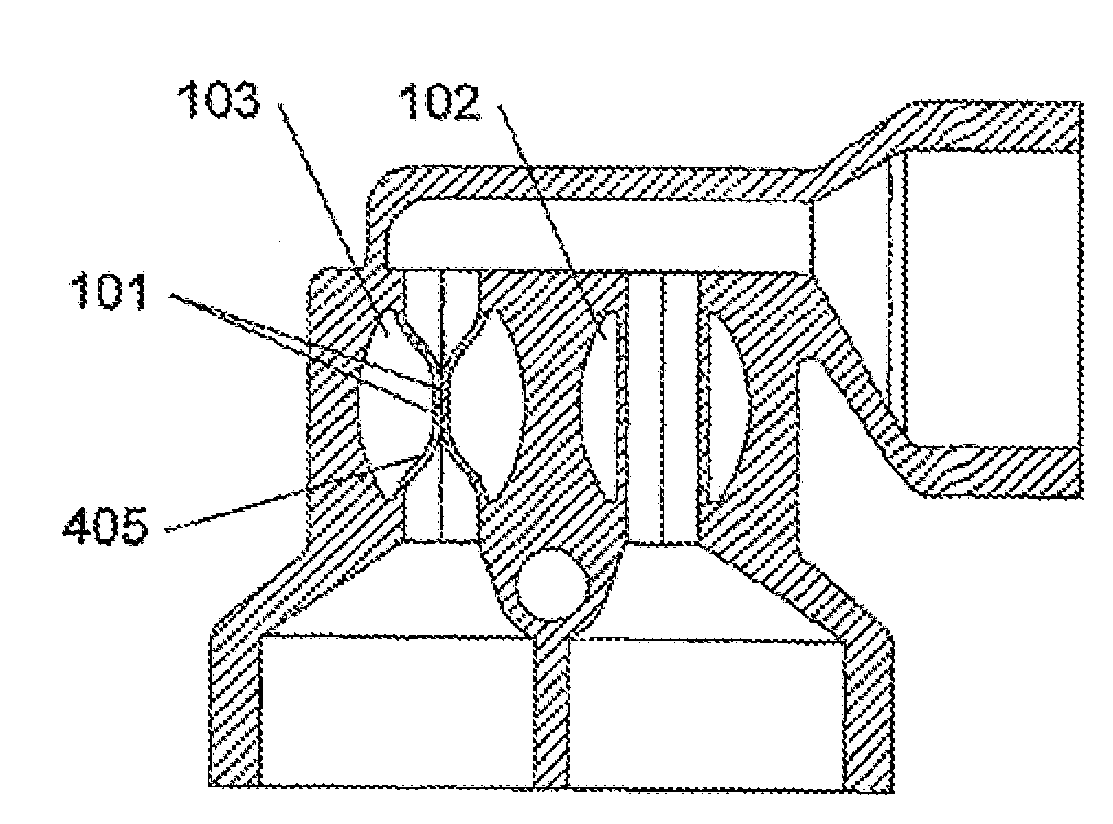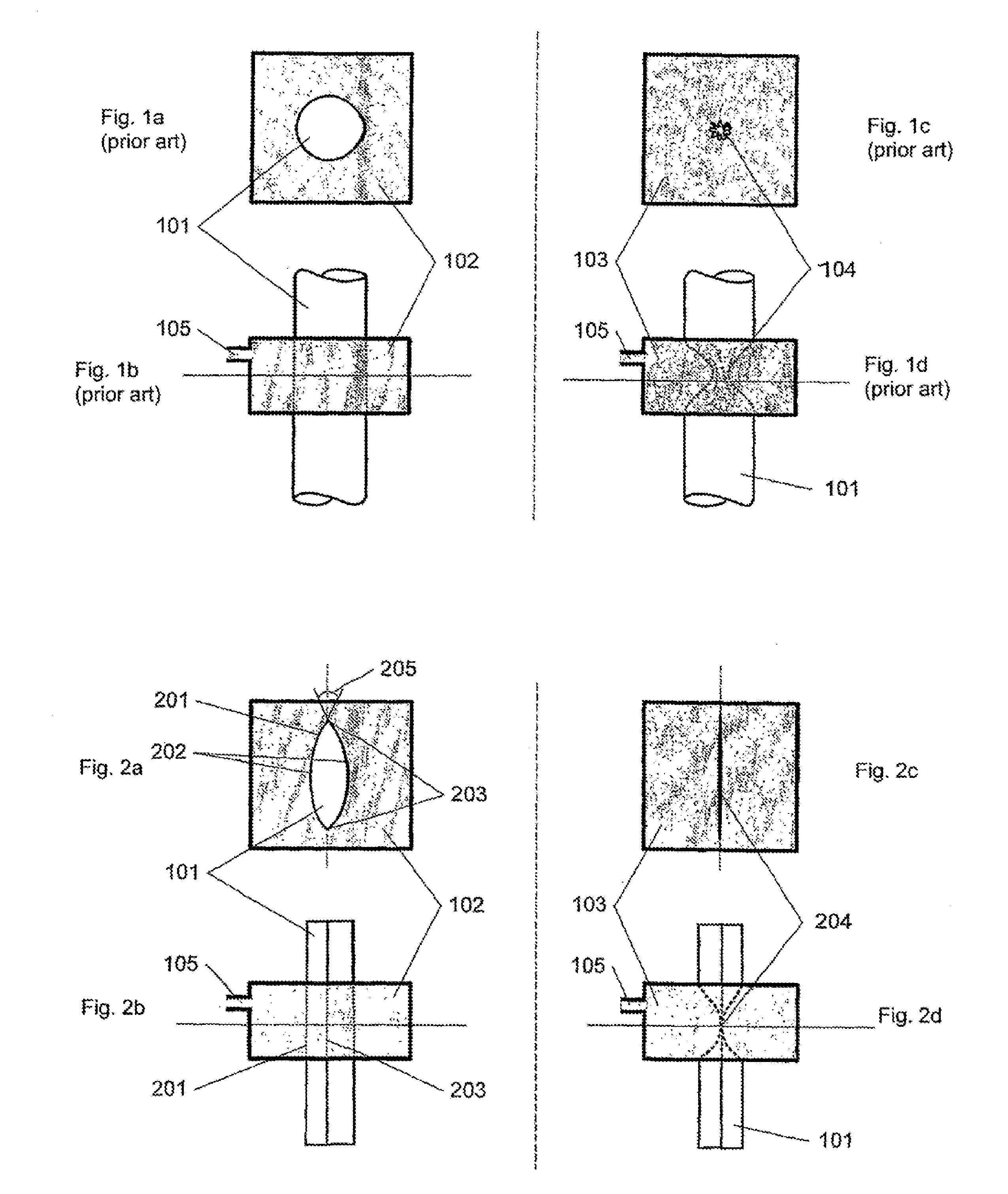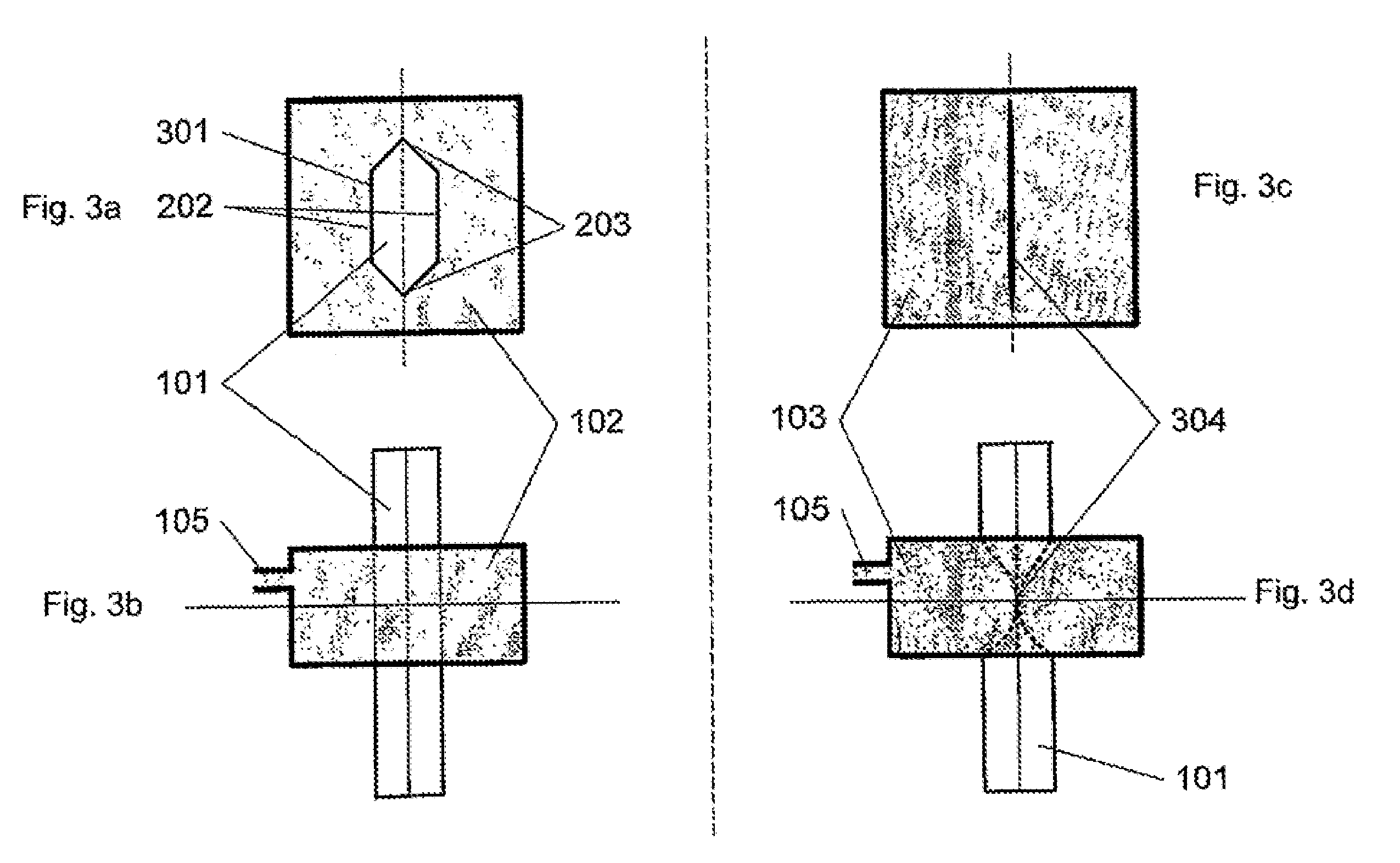Respiration valve
a technology of valve and wall segment, applied in the field of valve, can solve the problems of mechanically operated valves being sensitive to wear and fatigue, clumsy valves, heavy, etc., and achieve the effect of pressure needed to pinch the wall segment, excellent elastic properties, and high tensile strength
- Summary
- Abstract
- Description
- Claims
- Application Information
AI Technical Summary
Benefits of technology
Problems solved by technology
Method used
Image
Examples
Embodiment Construction
[0025]FIGS. 1a-1d illustrate the principle of a pneumatic pinch valve as known in the art. FIGS. 1a-1b illustrate top and side views of the open configuration of the valve, while FIGS. 1c-1d illustrate top and side view of the closed configuration. A cylindrical channel or tube 101 is surrounded by a chamber 102 with an injection port 105, and in close connection to the channel 101. When the chamber 102 is filled with air or some fluid under pressure 103 the cylindrical channel 101 will be pinched as shown schematically in FIGS. 1c-1d and the valve is closed. However, if the channel 101 is a conventional more or less circular tube, the valve will have difficulties in closing completely as the tube will wrinkle in compression 104 in some undefined shape not known a priori. Furthermore, this wrinkling 104 leads to severe wear and fatigue of the channel material even after a relatively few closing and opening operations of the valve.
[0026]FIGS. 2a-2d illustrate a pinch valve as used in...
PUM
 Login to View More
Login to View More Abstract
Description
Claims
Application Information
 Login to View More
Login to View More - R&D
- Intellectual Property
- Life Sciences
- Materials
- Tech Scout
- Unparalleled Data Quality
- Higher Quality Content
- 60% Fewer Hallucinations
Browse by: Latest US Patents, China's latest patents, Technical Efficacy Thesaurus, Application Domain, Technology Topic, Popular Technical Reports.
© 2025 PatSnap. All rights reserved.Legal|Privacy policy|Modern Slavery Act Transparency Statement|Sitemap|About US| Contact US: help@patsnap.com



